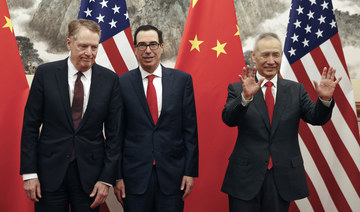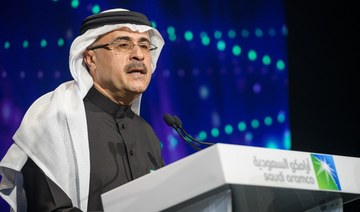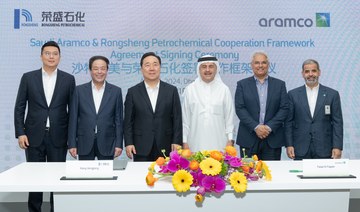WASHINGTON: In trying to hammer out a trade agreement with China, the Trump administration may be drawing inspiration from classic rock, specifically The Who’s anthem “Won’t Get Fooled Again.”
Fed up with China for breaking past promises, the administration is insisting on provisions designed to force the Chinese to live up to any commitments they make in trade talks that entered an 11th round on Thursday.
In fact, top US trade negotiator Robert Lighthizer and Treasury Secretary Steven Mnuchin this week accused the Chinese of already reneging on concessions they’d made earlier in the negotiations.
In retaliation for that alleged backsliding, the United States is poised to dramatically escalate the trade war between the world’s two biggest economies at 12:01 a.m. Friday Eastern time — by raising import taxes on $200 billion in Chinese goods from 10% to 25%.
And President Donald Trump said he’s preparing to slap 25% tariffs on another $325 billion in Chinese imports, covering everything China ships to the United States.
The two countries are battling over US allegations that China steals technology and pressures American companies into handing over trade secrets, part of an aggressive campaign to turn Chinese companies into world leaders in robotics, electric cars and other advanced industries.
The US currently is levying 10% tariffs on $200 billion of Chinese imports and 25% on another $50 billion. The Chinese have retaliated by targeting $110 billion in US products and are threatening more sanctions if Washington goes ahead with its plan to raise tariffs Friday.
When the talks began last year, it appeared that the Chinese might try to appease Trump by agreeing to buy lots of American products — especially soybeans and liquefied natural gas — and put a dent in America’s massive trade deficit with China, a whopping $379 billion last year.
But as the talks dragged on, it became increasingly apparent that “a heap of soybeans isn’t going to get the job done,” said Amanda DeBusk, chair of the international trade practice at the law firm Dechert LLP and a former US Commerce Department official.
Business groups, disappointed that China didn’t fully open up to foreign competition after joining the World Trade Organization in 2001, are pressuring the administration to hold out for a deal that requires China to abandon predatory trade practices, stop subsidizing homegrown companies and treat foreign firms more fairly.
“It was way past time to confront China on many of these problems,” said Michael Wessel, a member of the congressionally created US-China Economic Security Review Commission and president of The Wessel Group consulting firm. “They’ve been allowed to skate for far too many years.”
Reaching a deal with China to end the tariff war would be only the first hurdle for the Trump administration. Next would come the hard part: enforcing the agreement.
“The details will matter a lot,” said Dean Pinkert, partner at the law firm Hughes Hubbard & Reed and a former member of the US International Trade Commission. “In regard to the ‘structural’ issues — including intellectual property and forced technology transfers — what sort of enforcement mechanism will be established? Who gets to judge whether structural commitments are being honored? “
The Trump administration wants Beijing to accept an enforcement mechanism with penalties to make sure it carries out its commitments.
US officials say they must be cautious because Beijing has made empty promises before: A 2018 report by the Office of the US Trade Representative, for instance, found that China has promised eight times since 2010 not to force foreign companies to transfer technology to China. Yet the coercion continued, the US said.
“They didn’t comply and aren’t complying with their WTO obligations, and they aren’t following through on the commitments they’ve made repeatedly over the last decade,” said trade lawyer Stephen Orava, a partner at King & Spalding.
Enforcement would require lifting the lid of secrecy on Communist Party policies toward acquiring technology, subsidizing industries and shielding them from competition.
But China is likely to balk at accepting intrusive monitoring of its behavior, something that President Xi Jinping’s government likely would see as a violation of Chinese sovereignty.
Meantime, the US is pushing to keep tariffs in place as leverage to pressure China to comply with any agreement.
Xi’s government has yet to make clear whether it is really willing to scale back ambitious plans to turn China into a technological superpower, something Chinese leaders see as a route to prosperity and global influence.
Beijing is willing to tweak the plans, but the Communist Party wants to keep its dominant economic role.
Chinese officials deny Beijing steals or pressures companies to hand over technology, despite what security experts say is a mountain of evidence the ruling party rewards those who acquire it and sometimes directly carries out theft.
For decades, the ruling party has showered Chinese businesspeople, academics and others who “localize foreign technology” — the official euphemism for unauthorized copying of foreign know-how — with promotions, research grants, money and public praise.
Security researchers say the government operates a network of research institutes and business parks to turn stolen technology into commercial products.
In 2013, three Chinese scientists at New York University were charged with sending US taxpayer-financed research on magnetic resonance imaging to a Chinese government-run institute.
The following year, five members of China’s military cyber warfare unit were indicted on US industrial spying charges.
Chinese companies “benefit from cyber espionage,” the US-China Economic and Security Review Commission said in a report this month.
“Chinese government efforts to encourage and direct firms to acquire technology from the United States are likely to continue as Beijing seeks to further develop its domestic high-tech industries,” the report said.
Obtaining foreign technology is a theme that runs through Chinese law and government. Ending tactics that irk Beijing’s trading partners would require changing a thicket of rules, regulatory habits and incentives to local officials to promote technology development.
That includes a 2008 law that allows penalties for foreign companies deemed to be abusing control over technology. Businesspeople say Beijing uses that to pressure foreign companies to cut prices of patent licensing or drop complaints that Chinese partners have stolen technology.
Automakers and competitors in other industries are also required to work through joint ventures with state-owned local partners that cannot function unless the foreign company supplies technology and teaches a potential Chinese competitor to develop its own.
Analysts say the US has been pushing China to write its commitments into law, and Beijing has been resisting. China specialist Derek Scissors, resident scholar at the conservative American Enterprise Institute, said the real “standoff is about how public the Chinese changes are going to be. The US wants them entirely public. China is not willing to make high-profile public changes.”
In the end, any enforcement plan is likely to fall short — unless Beijing decides it’s really time to change. “Enforcement at the end of the day requires China to be transparent and abiding by its agreements. I can’t think of any structure in law or diplomacy that can enforce that,” said James McGregor, chairman for Greater China at the government relations firm APCO Worldwide. “It has to come from within China and a real desire to change its system.”
Burned before, US pushes for way to enforce China trade deal
Burned before, US pushes for way to enforce China trade deal
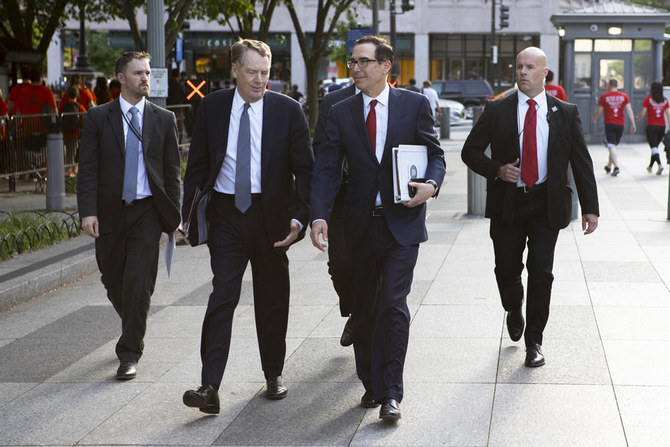
- The two countries are battling over US allegations that China steals technology and pressures American companies into handing over trade secrets
- Trump said he’s preparing to slap 25% tariffs on another $325 billion in Chinese imports
IsDB, SFD, Arab Coordination Group join initiative to raise $500m for education initiatives
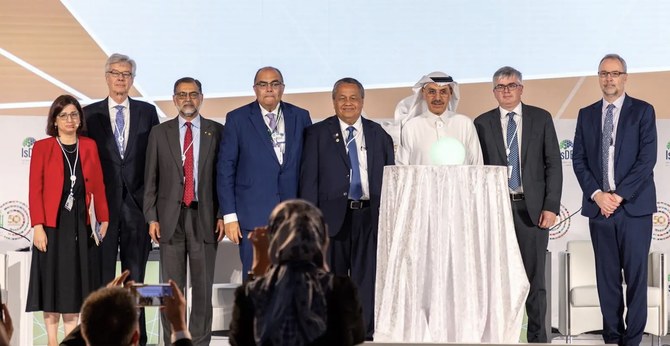
RIYADH: A global partnership involving the Islamic Development Bank will inject $500 million into educational initiatives across member countries of the Organization of the Islamic Cooperation.
During the annual meetings and golden jubilee celebrations of the IsDB, the Arab Coordination Group and the Saudi Fund for Development also joined The Global Partnership for Education, the Saudi Press Agency reported.
The Global Partnership for Education is a multi-stakeholder partnership and funding platform that aims to strengthen education systems in developing countries.
The amount will be raised by the Smart Finance for Education Initiative, an innovative financing tool.
Moreover, partners also pledged an additional $350 million to the initiative, including $150 million from the IsDB, $100 million from the Arab Bank for Economic Development in Africa, and $50 million from The Islamic Solidarity Fund for Development as well as $50 million from the Global Partnership for Education.
The initiative aims to enhance access to quality education in 37 OIC member countries, where 28 million children are without schooling.
Also at the event, the Islamic Corporation for the Insurance of Investment and Export Credit, a member of the IsDB concerned with providing Shariah-compliant insurance services, signed a retakaful agreement for a percentage of the shares allocated to Indonesia for the benefit of the country’s Eximbank.
A retakaful agreement is an Islamic reinsurance contract where takaful operators transfer a portion of their risk to a retakaful operator in compliance with Shariah principles.
The arrangement aims to provide strategic expertise and capabilities in the field of retakaful through a quota-sharing treaty specifically designed to support the launch of the financial institution’s new export credit takaful program product.
This comes as the business expected to be insured under this treaty is estimated at a value of $13 million during the year 2024.
During the IsDB annual meetings and jubilee celebrations, the bank’s president, Mohammed Sulaiman Al-Jasser, confirmed that the entity has designed a strategy for eco-conscious growth and low carbon reduction by supporting members to reach the zero-carbon goal.
Al-Jasser also pointed out that 40 of the bank’s projects are about renewable energy, green projects, and financing climate action.
He underlined the bank’s focus on green initiatives and sustainable development sukuk, indicating they are compatible with the Capital Markets Union standard.
The IsDB’s 2024 annual meetings are being held under the patronage of King Salman bin Abdulaziz in Riyadh from April 27 - 30.
The annual sessions coincide with IsDB’s golden jubilee, as the institution celebrates 50 years of promoting economic and social development in 57 member nations under the slogan “Taking pride in our past, shaping our future: authenticity, solidarity, and prosperity" reflecting the bank’s legacy and future goals.
Closing Bell: TASI closes in green; Saudi banks profits up
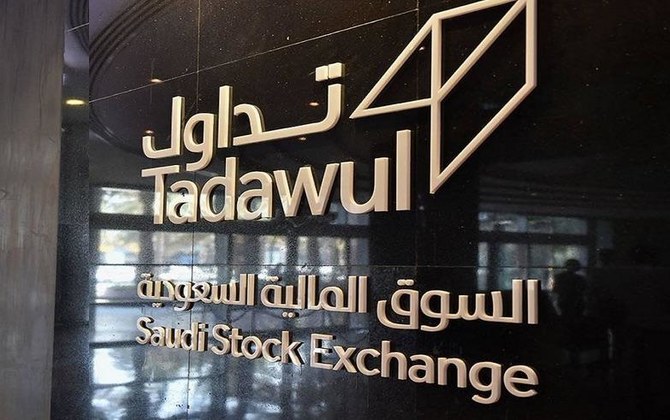
RIYADH: Saudi Arabia’s Tadawul All Share Index wrapped up Monday’s trading session at 12,369.46 points, witnessing an increase of 137.92 points, or 1.13 percent.
The parallel market, Nomu, ended the day at 26,227.72 points, shedding 3.11 points or 0.01 percent.
Conversely, the MSCI Tadawul Index grew by 24.35 points to close at 1,569.81, a 1.58 percent increase.
TASI reported a trading volume of SR8.2 billion ($2.19 billion), with 165 stocks making gains and 63 witnessing declines.
Nomu, on the other hand, saw a trading volume of SR52 million.
On the announcement front, Al Rajhi Bank reported an increase in profits to SR4.4 billion for the first quarter of 2024, reflecting a 6 percent rise from SR4.1 billion recorded during the corresponding period in 2023.
The bank primarily attributed this growth to a 10.2 percent increase in net income from financing and investment activities, driven by a rise in total income on financing and investment.
This was further supported by an increase in total returns on these investments, according to a bourse filing.
Its operational income also saw a healthy increase, rising by 6.6 percent due to gains in net financing and investment income alongside income from other operations.
However, these gains were partially offset by a decrease in income from banking service fees and foreign currency exchange activities.
On the expenditure side, total operating expenses, including provisions for credit losses, rose by 7.2 percent. This increase was largely due to higher depreciation costs and employee salaries and benefits.
Despite these rising costs, the bank managed to mitigate some financial pressures with a reduction in other general and administrative expenses. Notably, provisions for credit losses escalated significantly, from SR359 million in the previous year to SR421 million in 2024, reflecting a 17.3 percent increase.
Furthermore, Bank Albilad also saw an increase in profits as it released its first quarter results.
The bank reported a 15 percent increase in profits, reaching SR643.1 million up from SR559.9 million in the same quarter of the previous year, according to a bourse filing.
The increase in profits was primarily attributed to a robust performance in its investment and financing assets, which saw a 21 percent increase in income.
This significant growth in asset income helped offset the 54 percent rise in the return on deposits and financial liabilities, underlining the bank’s effective management of its asset portfolio against rising costs.
Additionally, Saudi National Bank also managed to secure an increase in profits in the first quarter. The bank reported a marginal rise in its profits to SR5.04 billion from SR5.02 billion during the same period last year.
This modest increase in profits was underpinned by a significant 21.9 percent rise in special commission income, driven largely by growth in the bank’s financing and investment portfolios, coupled with rising interest rates.
The bank also experienced a slight 0.4 percent increase in net income attributable to shareholders, buoyed by a 2.4 percent improvement in total operating income and gains from other non-operational financial activities.
However, petrochemical company Saudi Kayan reported a loss in its first quarter results. Despite the ongoing challenges, the company managed to reduce its losses to SR571.9 million from SR673.3 million in the same quarter the previous year.
Saudi Kayan attributed the narrowed losses primarily to an increase in revenues, spurred by higher sales volumes, which helped counterbalance the impact of lower average product selling prices.
In a Tadawul filing, the company noted that while the average selling prices had decreased, the overall financial performance improved compared to the previous year.
Saudi Aramco retains its status as Middle East’s most valuable brand
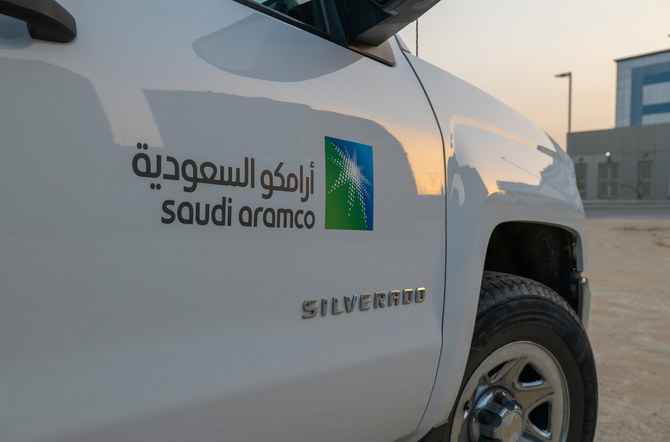
RIYADH: Energy giant Saudi Aramco has maintained its position as the Middle East’s most valuable brand, with a value of $41.5 billion, according to a report.
The latest analysis by Brand Finance revealed the firm continued to dominate the region despite an 8 percent drop in value, driven by a fall in crude oil prices and lower sales volumes.
The report noted that a 12 percent increase in brand value to $13.9 billion meant the Kingdom’s telecommunications firm stc was ranked as the second most valuable in the Middle East and the region’s most sought-after telecom company.
Andrew Campbell, managing director of Brand Finance in the Middle East, said that stc is steadily progressing as one of the leading telecommunications firms globally.
“While Aramco remains the dominant player in terms of brand value in Saudi Arabia, stc’s strategic acumen, characterized by ongoing diversification and digital transformation, have further solidified the brand’s status as Saudi Arabia’s strongest brand, while also positioning it among the world’s leading telecoms brands,” said Campbell.
The report noted that stc encompassed “an integrated system of subsidiaries specialized across sectors, alongside its traditional telecommunications services.”
It add that the company’s acquisition of an interest in Telefonica “marks another key milestone in stc’s growth journey.” said Brand Finance.
With a brand value of $6.4 billion, Al Rajhi Bank became the third most valuable firm in the Kingdom.
Saudi Basic Industries Corp. and Saudi National Bank were ranked fourth and fifth, respectively, with values totaling $4.9 billion and $4.5 billion, respectively.
Saudi Arabia’s King Faisal Specialist Hospital & Research Center, with a value of $1.5 billion, became the Middle East’s most valuable Healthcare label, the report added.
In the UAE, Abu Dhabi National Oil Co. was named the most valuable brand, with a value of $15.2 billion.
On the other hand, Qatar National Bank was ranked the top-rated brand among Qatari firms, with a value of $8.4 billion.
Islamic finance industry projected to grow in 2024-2025
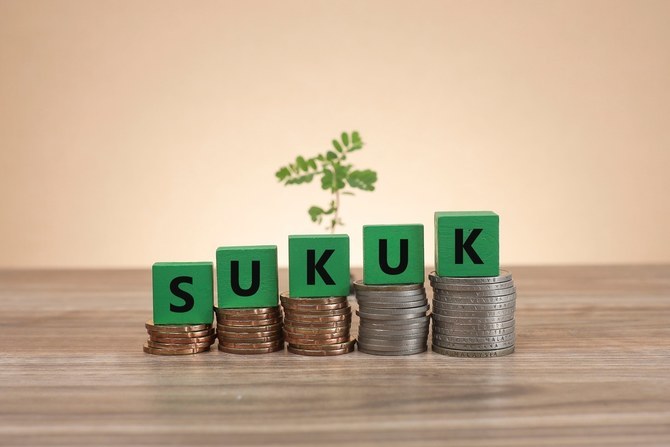
RIYADH: The Islamic finance industry is projected to grow globally in 2024-2025 with total assets likely to witness single-digit growth driven by economic diversification efforts, a report said.
It predicted that sukuk issuance globally would hover between $160 billion and $170 billion in 2024, representing a steady momentum from $168.4 billion in 2023 to $179.4 billion in 2022.
In its latest analysis, credit rating agency S&P Global highlighted that the industry grew by 8 percent and 8.2 percent in 2023 and 2022, respectively, stemming from growth in banking assets and the sukuk industry.
According to the US-based firm, Islamic banking assets grew 56 percent in 2023 compared to 72 percent in 2022.
Financial institutions across the Gulf Cooperation Council region accounted for 86 percent of the reserve increase in 2023, with Saudi Arabia becoming the chief contributor, having generated 56.7 percent of the maturation.
“We expect the implementation of Vision 2030 and growth in corporate and mortgage lending to continue supporting the Islamic finance industry over the next 12-24 months. In addition, the UAE showed a stronger contribution in 2023 thanks to the good performance of the non-oil sector,” the report noted.
It added: “Elsewhere, we observed some growth, particularly in Turkiye and Indonesia. The performance in Malaysia and Turkiye was somewhat tempered by the depreciation of the ringgit and the lira.”
According to the US-based firm, the issuance of this Shariah-compliant debt product began on a strong footing in 2024, with Saudi Arabia becoming a key contributor to the performance.
“The drop in issuance volumes in 2023, which mainly resulted from tighter liquidity conditions in Saudi Arabia’s banking system and Indonesia’s lower fiscal deficit, was somewhat compensated by an increase in foreign currency-denominated sukuk issuance,” S&P Global said in the report.
It added: “The market has started 2024 on a strong footing, with total issuance reaching $46.8 billion at March 31, 2024, compared with $38.2 billion at March 31, 2023.”
The analysis highlighted that the sukuk market will continue its growth momentum in the near term as financing needs in core Islamic finance countries remain high, given ongoing economic transformation programs, especially in countries like Saudi Arabia.
“We expect the sukuk market to fill in some of these needs. Specifically, we see some opportunities in the structured finance space with banks tapping the sukuk market to refinance their sizable mortgage books,” said the agency in the report.
The agency highlighted that the drive for digitalization and sustainability initiatives have yielded mixed results in the Islamic finance industry.
“While opportunities related to sustainable finance are significant as the industry is concentrated in oil exporting countries, progress has been relatively slow and limited in the global context,” according to S&P Global.
However, the report noted that digitalization has helped the banking side of the industry.
S&P Global concluded the study by saying that the future of Islamic finance is sustainable, collaborative, and digital.
“It is sustainable thanks to the alignment between Shariah principles, overarching pillars of sustainability, and the value proposition of Islamic finance that capture more than just financial objectives,” said the report.
According to the analysis, the future of Islamic finance is collaborative because stakeholders do not want to disrupt the industry equilibrium and erase the development achieved over the past 50 years.
The report added that digitalization will also impact Islamic finance in the coming years, as leveraging emerging technologies could help the industry enhance its efficiency and ultimately increase its value proposition for investors and issuers.
Earlier this month, another report released by Fitch Ratings noted that global outstanding sukuk expanded 10 percent year on year to reach $867 million at the end of the first quarter of 2024.
The credit rating agency attributed the growth of this Islamic debt product to funding and refinancing needs, and the development of the debt capital market in the GCC region.
The report, however, added that new Shariah requirements that could alter credit risk, geopolitical uncertainties and high oil prices, could affect the growth of the sukuk market this year.
Saudi Aramco is looking at investment in new energies outside of the Kingdom, CEO says
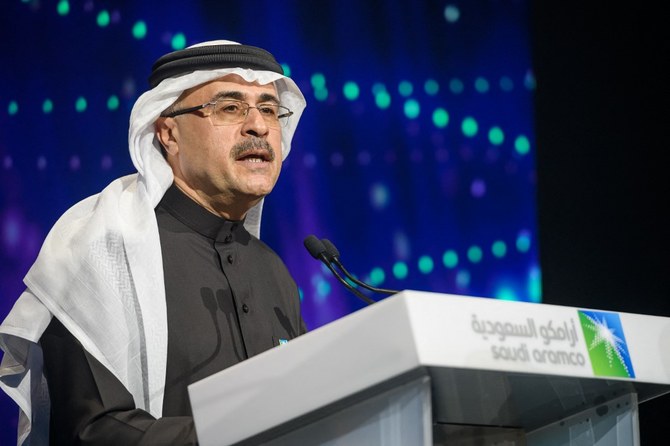
DUBAI: Saudi Arabia’s state-oil giant Aramco is looking at investments right now in new energies outside of the Kingdom, CEO Amin Nasser said on Monday at the sidelines of a World Economic Forum special meeting held in Riyadh.




